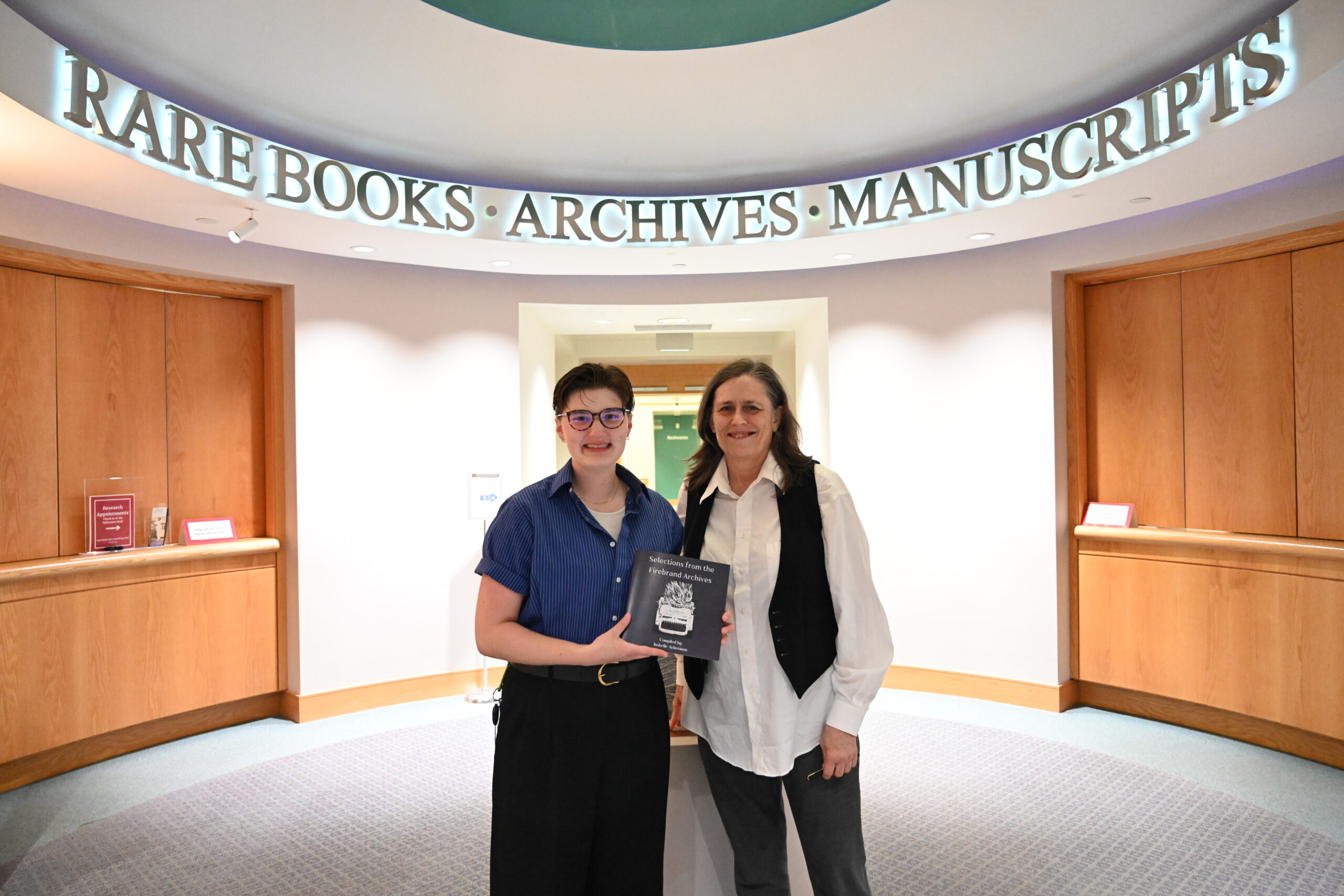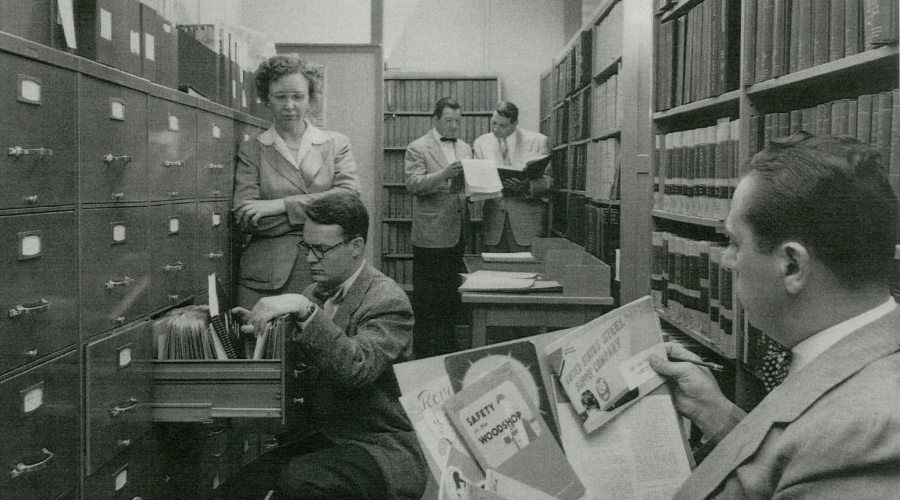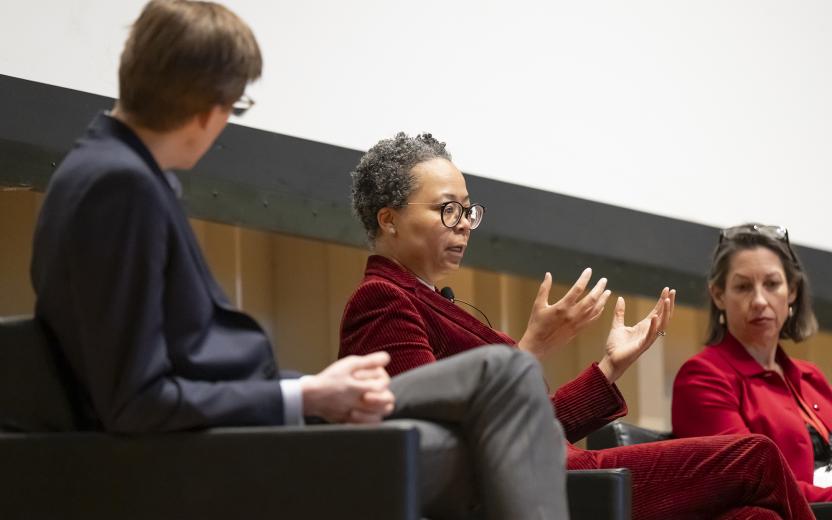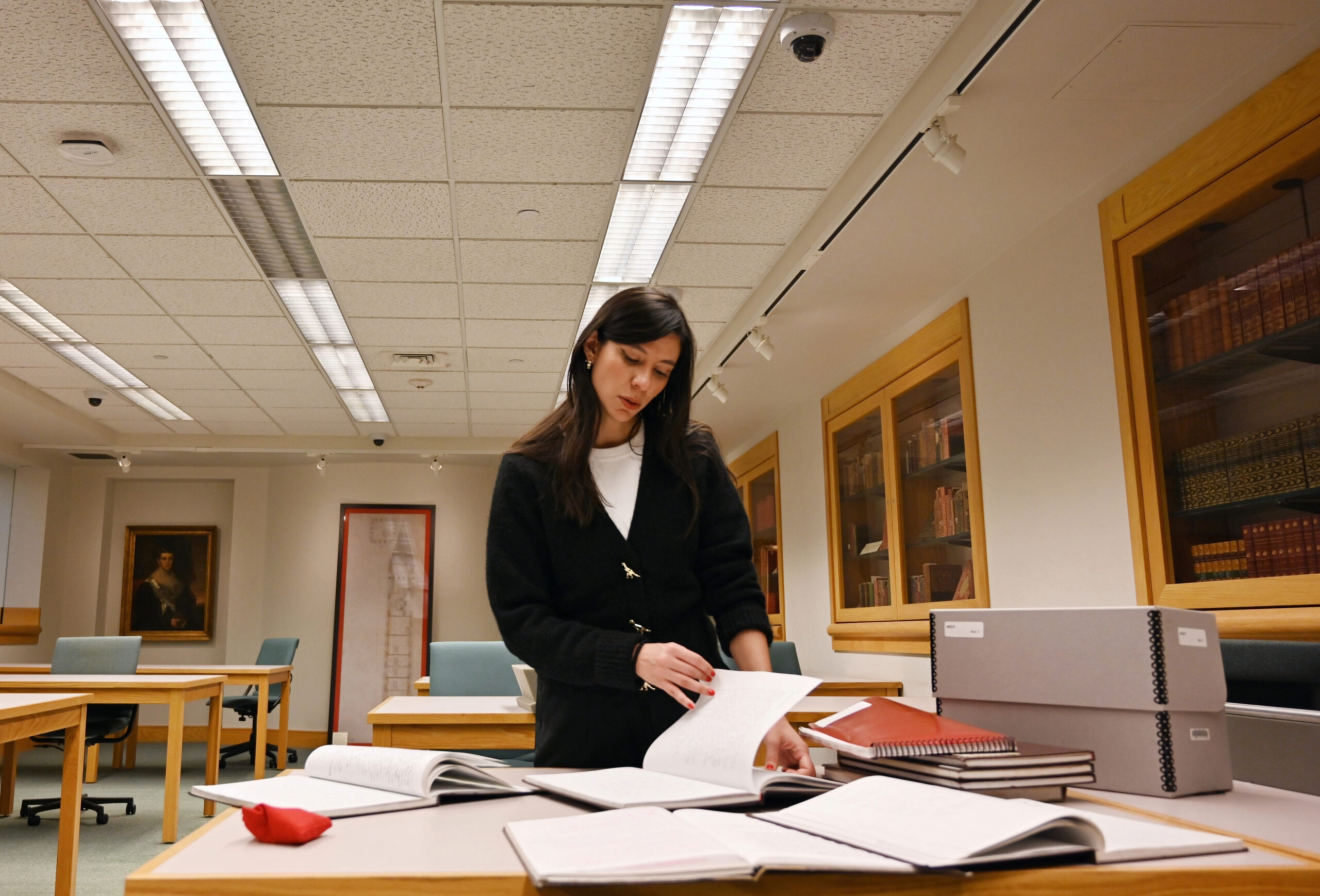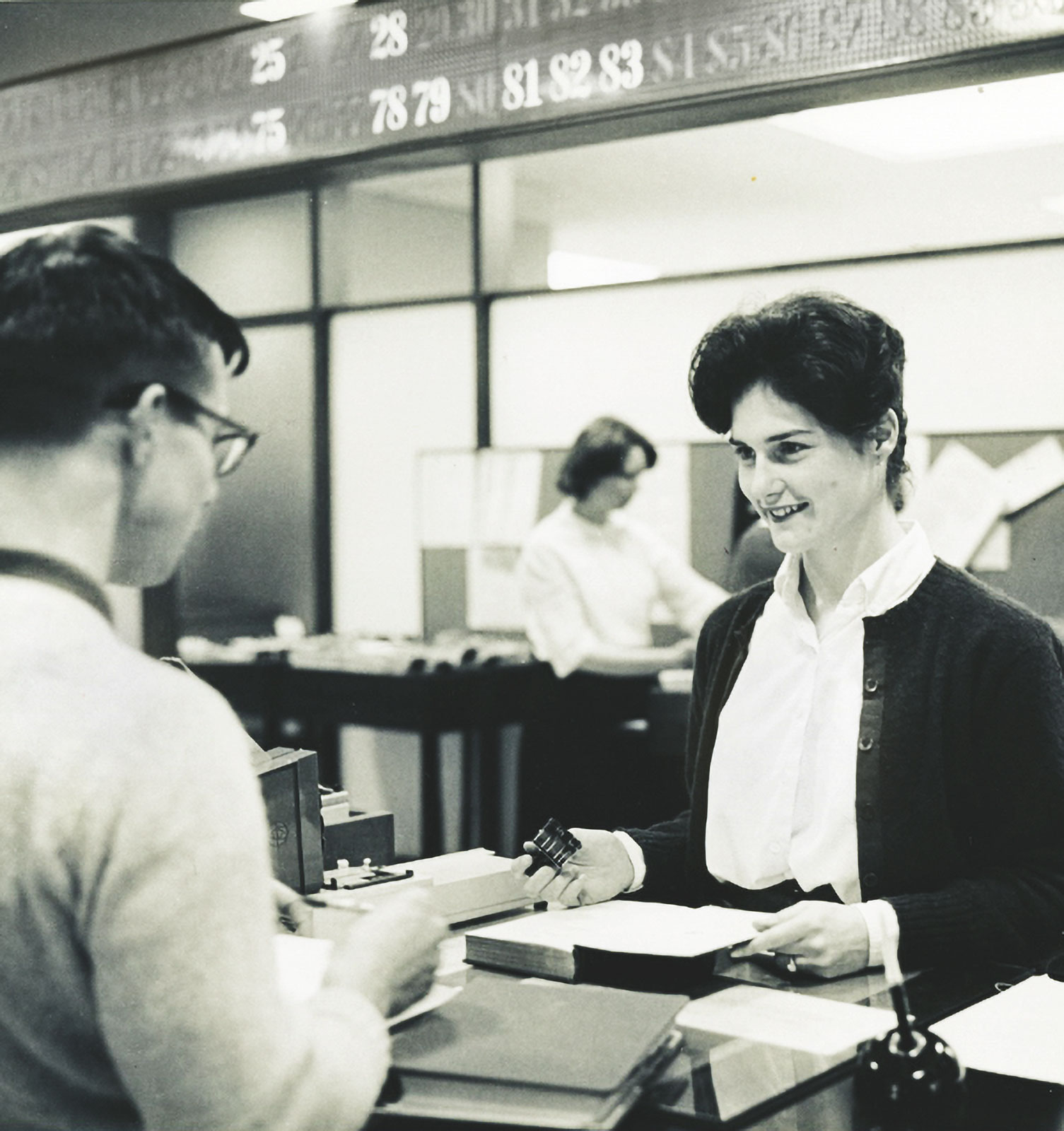
At the age of 63, Olin Library is in the midst of a major renovation of its first floor and basement level that will modernize its access and spaces. The building’s 1961 exterior—long likened to a giant IBM punch card—will remain unchanged.
And fear not, library fans: an iconic element—the numbered call board that has hung over the circulation desk since the building opened—will be given a new life in the refreshed space.
“The call board is one of Olin’s most distinctive and beloved features,” says librarian Susette Newberry, PhD ’99. “The entire renovation team insisted on finding a place for it in the new design.”
Also known as a “paging numbers” sign, the Cold War-era display features light-up numerals from 1 to 100.
Measuring nearly 19 feet wide, a foot high, and 7.5 inches deep, it’s the most visible part of the library’s erstwhile access system.
When Olin opened—and until well into the 1990s—it was a “closed-stack” research library: only grad students and faculty (and the occasional undergrad with a special pass) were allowed to go upstairs to browse and retrieve books and other materials.
To access items, other patrons had to fill out a slip at the circulation desk and would receive a number—yes, just like at a deli counter.
The request slip was then sent via a pneumatic tube system to the appropriate floor and section, where student workers were stationed.
(While the system is no longer operative, some of the tubes still exist within Olin’s walls.)
Once the item was sent down to the main floor via dumbwaiter (also still extant), the patron would be alerted by the call board, which would light up the corresponding number.
The entire process—from request to retrieval to checkout—would ideally take under 10 minutes.
(Interestingly: when the tube system broke down in 1961–62 and undergrads were briefly allowed full stack access, grad students complained that they were poaching their favorite study spots.)
Once the stacks opened to all in the mid-’90s, the call board was used far less often—though it was still employed for special requests and to page certain materials.
During the COVID pandemic, it even enjoyed a temporary comeback, as paging requests surged during the many months of social distancing.
Now, the Olin renovation is spurring a new chapter in the life of the vintage device.
Library staff are partnering with students in electrical and computer engineering to repurpose the call board as a digital clock—making it a both a timepiece and something of a work of art.
Their faculty advisor, senior lecturer Joe Skovira, PhD ’90, has some relevant experience: in 2022, he helped students repair the electronics in the Bill Nye ’77 Solar Noon Clock atop Rhodes Hall.
While the call board’s original wiring will be preserved as much as possible, the incandescent bulbs behind each number will be replaced with multicolor LEDs controlled by computer.
Students are still designing the method by which the numerals will function as a clock; 1–12 would be used for hours and 1–60 for minutes, with dual colors likely used when a numeral is needed for both simultaneously.
The new clock is expected to be installed over the 2024–25 winter break, with the entire renovation completed by spring 2025.
“It will be both a tribute to Olin’s past as a closed-stack library,” says Jon Ladley, Cornell University Library’s director of facilities planning, “and an inviting beacon in the building’s next chapter as an open and welcoming space for all.”
This story originally appeared in Cornellians.

